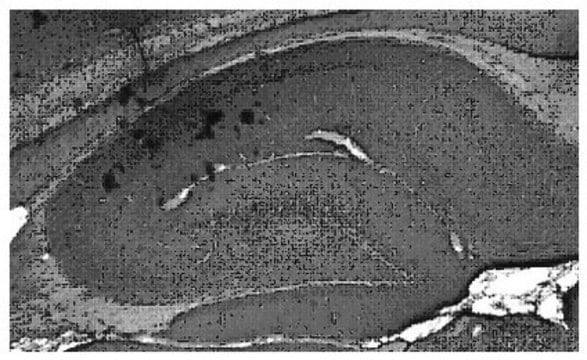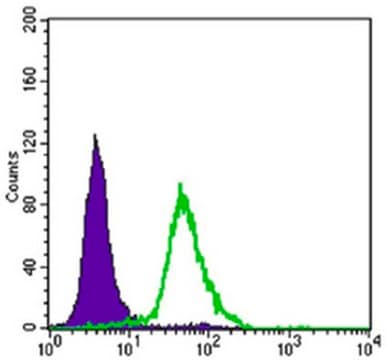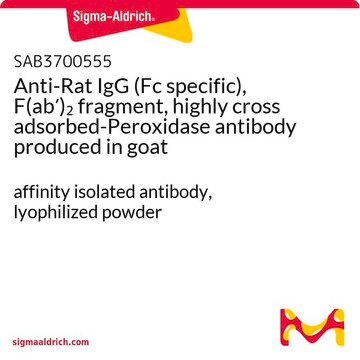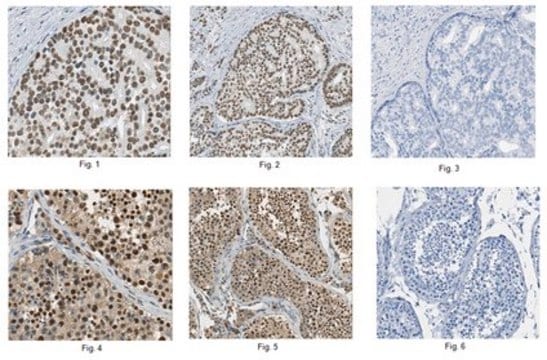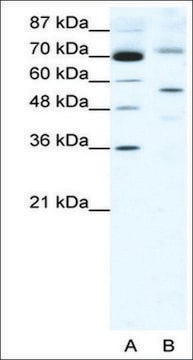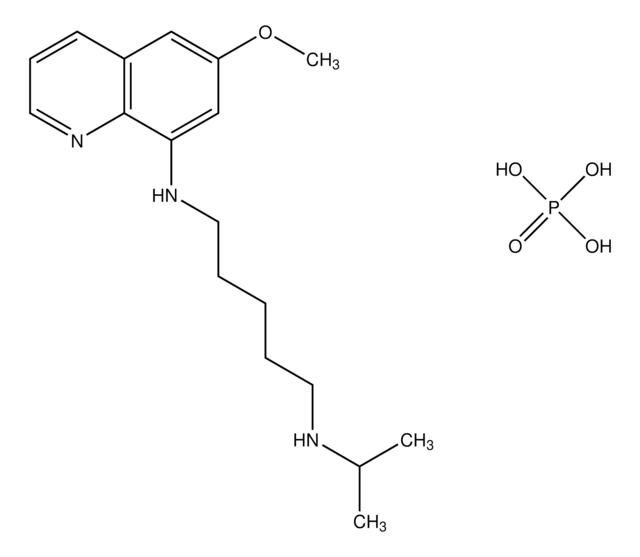ST1099
Anti-TORC2 (454-607) Rabbit pAb
liquid, Calbiochem®
Sign Into View Organizational & Contract Pricing
All Photos(1)
About This Item
UNSPSC Code:
12352203
NACRES:
NA.41
Recommended Products
biological source
rabbit
Quality Level
antibody form
serum
antibody product type
primary antibodies
clone
polyclonal
form
liquid
does not contain
preservative
species reactivity
human, mouse, rat
manufacturer/tradename
Calbiochem®
storage condition
OK to freeze
isotype
IgG
shipped in
wet ice
storage temp.
2-8°C
target post-translational modification
unmodified
General description
Rabbit polyclonal antibody supplied as undiluted serum. Recognizes the ~79-85 kDa TORC2 protein.
Recognizes the ~79-85 kDa TORC2 protein in primary hepatocytes, HepG2, NIH3T3, Min6, and FAO cells.
TORCs (Transducers Of Regulated cAMP Response Element-Binding (CREB) protein) are members of a conserved family of co-activators that enhance CRE-dependent transcription by a phosphorylation-independent interaction with the bZIP DNA binding/dimerization domain of CREB. Studies suggest that TORC phosphorylation and nuclear/cytoplasmic shuttling play an important role in the regulation of gluconeogenesis by cAMP.
This Anti-TORC2 (454-607) Rabbit pAb is validated for use in Immunoblotting, Immunoprecipitation for the detection of TORC2 (454-607).
Immunogen
Human
a recombinant protein consisting of amino acids 454-607 of mouse TORC2 fused to GST
Application
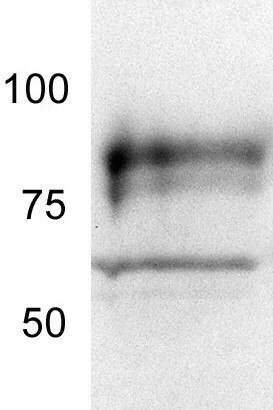
Immunoblotting (1:2000, see comments)
Immunoprecipitation (1:100, see comments)
Warning
Toxicity: Standard Handling (A)
Physical form
Undiluted serum.
Reconstitution
For long-term storage, aliquot and freeze (-20°C). In the case of storage at -20°C, avoid freeze/thaw cycles.
Analysis Note
Positive Control
Primary rat hepatocytes, HepG2, NIH3T3, Min6, and FAO cells
Primary rat hepatocytes, HepG2, NIH3T3, Min6, and FAO cells
Other Notes
Screaton, R.A., et al. 2004. Cell119, 61.
This antibody has been used to detect endogenous TORC2 by immunoblotting. For immunoprecipitation, 4 µl antibody in a total volume of 400 µl has been tested. May also detect a protein at ~60 kDa, which may be a degradation product of TORC2. Antibody should be titrated for optimal results in individual systems.
Legal Information
CALBIOCHEM is a registered trademark of Merck KGaA, Darmstadt, Germany
Not finding the right product?
Try our Product Selector Tool.
Storage Class
10 - Combustible liquids
wgk_germany
WGK 1
flash_point_f
Not applicable
flash_point_c
Not applicable
Certificates of Analysis (COA)
Search for Certificates of Analysis (COA) by entering the products Lot/Batch Number. Lot and Batch Numbers can be found on a product’s label following the words ‘Lot’ or ‘Batch’.
Already Own This Product?
Find documentation for the products that you have recently purchased in the Document Library.
John Le Lay et al.
Cell metabolism, 10(1), 55-62 (2009-07-09)
The liver contributes to glucose homeostasis by promoting either storage or production of glucose, depending on the physiological state. The cAMP response element-binding protein (CREB) is a principal regulator of genes involved in coordinating the hepatic response to fasting, but
Haitao Wang et al.
Molecular endocrinology (Baltimore, Md.), 22(7), 1596-1605 (2008-05-10)
The transcriptional coactivator peroxisome-proliferator-activated receptor-gamma coactivator-1alpha (PGC-1alpha) is induced in the liver in response to fasting and coordinates the activation of targets necessary for increasing energy production for gluconeogenesis and ketogenesis. After partial hepatectomy, the liver must restore its mass
Julie A Highland et al.
American journal of physiology. Cell physiology, 307(7), C611-C621 (2014-08-01)
Entrainment of the intrinsic suprachiasmatic nucleus (SCN) molecular clock to the light-dark cycle depends on photic-driven intracellular signal transduction responses of SCN neurons that converge on cAMP response element-binding protein (CREB)-mediated regulation of gene transcription. Characterization of the CREB coactivator
Pablo E Hollstein et al.
Cancer discovery, 9(11), 1606-1627 (2019-07-28)
Mutations in the LKB1 (also known as STK11) tumor suppressor are the third most frequent genetic alteration in non-small cell lung cancer (NSCLC). LKB1 encodes a serine/threonine kinase that directly phosphorylates and activates 14 AMPK family kinases ("AMPKRs"). The function
Lorna I F Smith et al.
Journal of neuroendocrinology, 33(1), e12920-e12920 (2020-12-15)
The activation and nuclear translocation of cAMP-response element binding protein (CREB)-regulated transcription coactivator (CRTC)2 occurs in the rat adrenal gland, in response to adrenocorticotrophic hormone (ACTH) and stressors, and has been implicated in the transcriptional regulation of steroidogenic acute regulatory
Our team of scientists has experience in all areas of research including Life Science, Material Science, Chemical Synthesis, Chromatography, Analytical and many others.
Contact Technical Service
